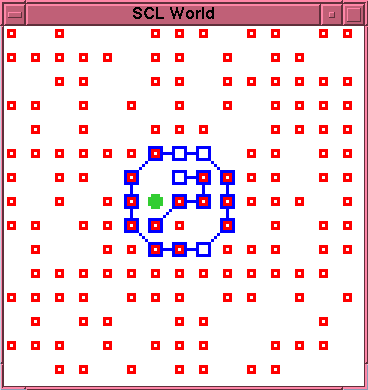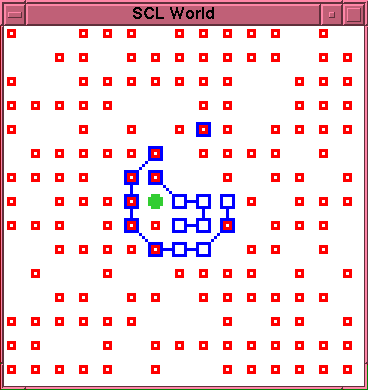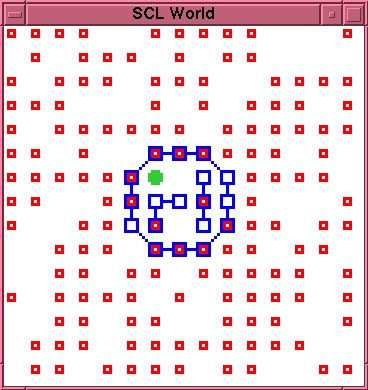
 6.2 Run 1-2
6.2 Run 1-2
Given the descriptions of runs 1 and 2, only a brief description of the remaining runs is necessary. Precisely the same failure mechanism is again observed: the L particles produced within the membrane spontaneously bond to each other, thus becoming immobile, rather than remaining available to drift to a rupture site when it arises; the interior of the membrane becomes progressively clogged up, until there is no longer space available for further production. At this point, since no L particles are available to repair any rupture, and no more can be produced within the membrane, the original entity has effectively degenerated. In all three runs this occurs without even a single episode of successful repair of the membrane. The times at which this condition is reached are as follows:
| Run | Time |
| 3 | 282 |
| 4 | 126 |
| 5 | 165 |
These terminal configurations for runs 3-5 are shown in figures 6, 7 and 8 respectively.
Figure 6: Experiment 1, Run 3, Time 282.

Figure 7: Experiment 1, Run 4, Time 126.

Figure 8: Experiment 1, Run 5, Time 165.

 6.2 Run 1-2
6.2 Run 1-2
Copyright © 1997 All Rights Reserved.
Timestamp: Wed Feb 5 21:58:53 GMT 1997